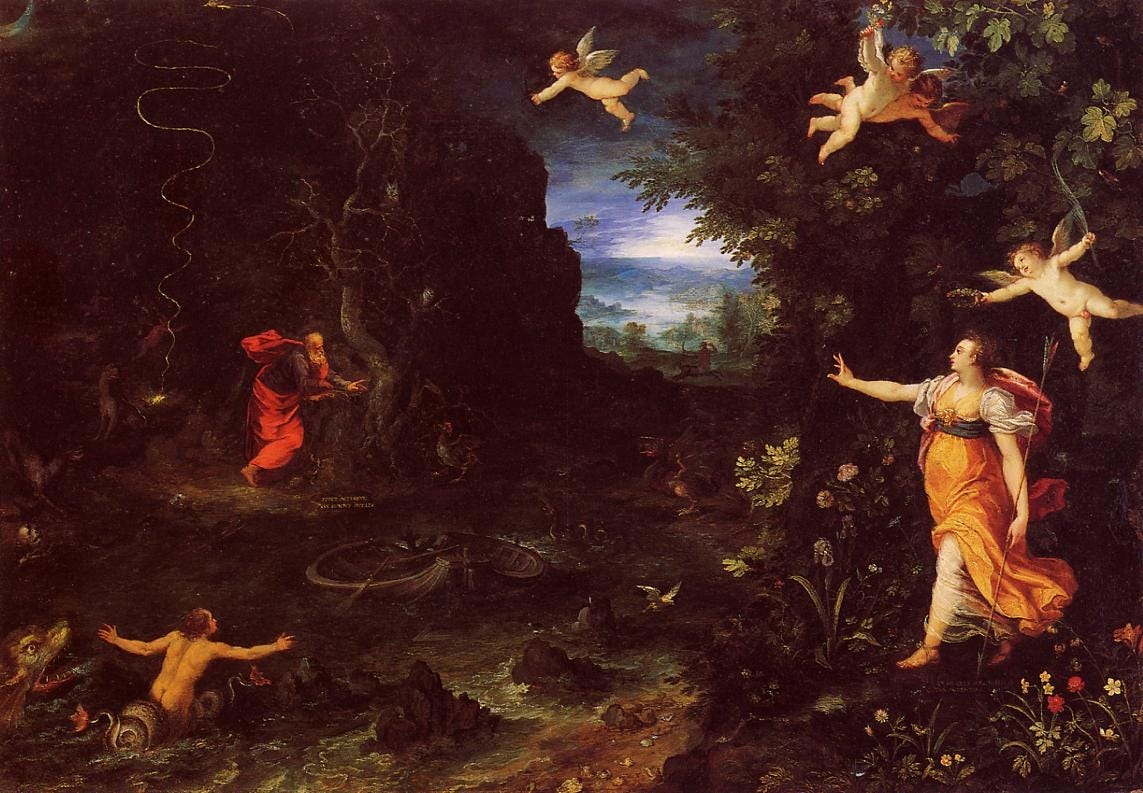“Mythology” Series:
Format: Each week we present a concise mythological story and draw direct parallels to contemporary AI concepts.
Goal: Highlight how modern technological dilemmas mirror ancient Greek tales, sparking interest about both subjects.
1. Mythological reference
In Greek mythology, Circe is the powerful sorceress who transforms men into swine, showcasing her remarkable ability to manipulate reality at will. Featured prominently in Homer’s Odyssey, Circe’s island becomes a place where mortal assumptions are shattered, and appearances are deceiving—one moment, you’re a confident sailor; the next, you’re rooting around as a pig. This myth underscores the allure and danger of illusions, where shifts in form and perception challenge our sense of identity and control.
2. Parallel with AI and lesson from ancient mythology
AI’s transformative power
Modern artificial intelligence wields a similarly transformative power, reshaping not only digital landscapes but also human experiences:
Deepfakes
AI-generated videos and images that can seamlessly change appearances, echoing Circe’s enchantments. They can be used for entertainment and art—or, more ominously, to spread misinformation and manipulate public opinion.
Immersive technologies (VR/AR)
Virtual and augmented reality platforms alter perceptions of the physical world, enabling users to inhabit entirely new personas or surroundings. Much like Circe’s illusions, these can offer enlightening experiences—or distort our grasp of reality.
Identity manipulation
Advanced filters, avatar creation, and AI-driven media can blur the line between one’s authentic self and a digitally altered persona. Similar to Circe’s potions, such tools challenge us to discern who or what is real behind the transformation.
Lesson: balancing wonder and responsibility
Circe’s story reveals a paradox: transformation can lead to enlightenment (Odysseus eventually learns crucial lessons) or to deception and harm (his crew suffers dehumanizing spells). In Gods and Robots: Myths, Machines, and Ancient Dreams of Technology, Adrienne Mayor notes how ancient tales of shape-shifting presage today’s ethical quandaries about technology’s power to modify reality. Similarly, modern researchers in digital ethics stress the importance of maintaining authenticity and consent in immersive environments, lest we lose ourselves in illusions we can no longer control.
3. Reflections and questions to consider
Ethical illusions
How do we ensure VR, AR, and deepfake technology serve constructive purposes—such as empathy-building or creative expression—rather than deception?
Identity and consent
In an age where anyone’s face or voice can be altered, what mechanisms should be in place to protect individuals from non-consensual use of their likeness?
Data exploitation
As immersive platforms collect extensive personal data, how do we guard privacy and prevent manipulative practices that may undermine user autonomy?
Preserving authenticity
How can society foster trust and authenticity when illusions become indistinguishable from reality, particularly in politics, media, and social interactions?
4. References
Iliad
(Epic narrative that highlights shifting allegiances and illusions of power—parallels to technology’s capacity for rapid, sometimes deceptive, change.)Odyssey
(Homer’s classic featuring Circe’s transformations, underscoring the fragile boundary between illusion and reality.)Adrienne Mayor, Gods and Robots: Myths, Machines, and Ancient Dreams of Technology
(Explores how ancient myths illuminate modern tech dilemmas—particularly relevant for transformations akin to Circe’s magic.)Jean Baudrillard, Simulacra and Simulation
(Analyzes how representations can become realities, a concept resonant with deepfakes and immersive digital experiences.)Technical documentation on deepfakes, VR, and AR
(Examines the latest developments and best practices for building ethical, user-focused immersive technologies.)




Love the use of the Great Books / AI. Us liberal arts college students are 👏